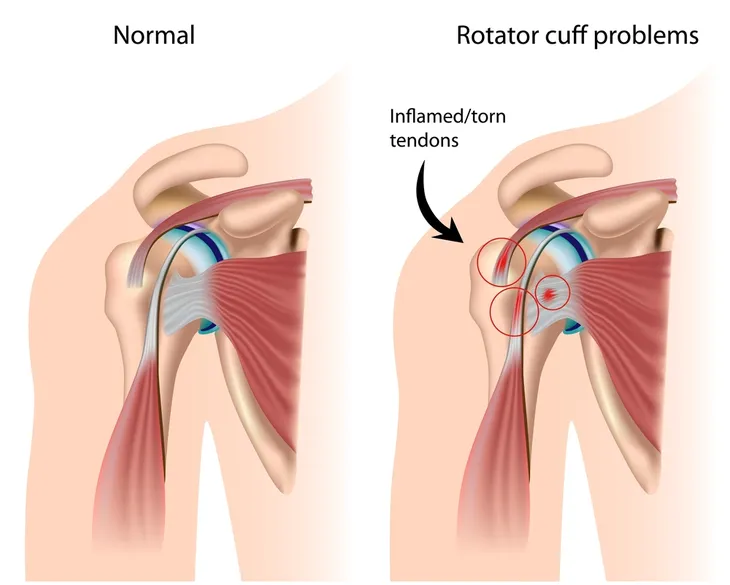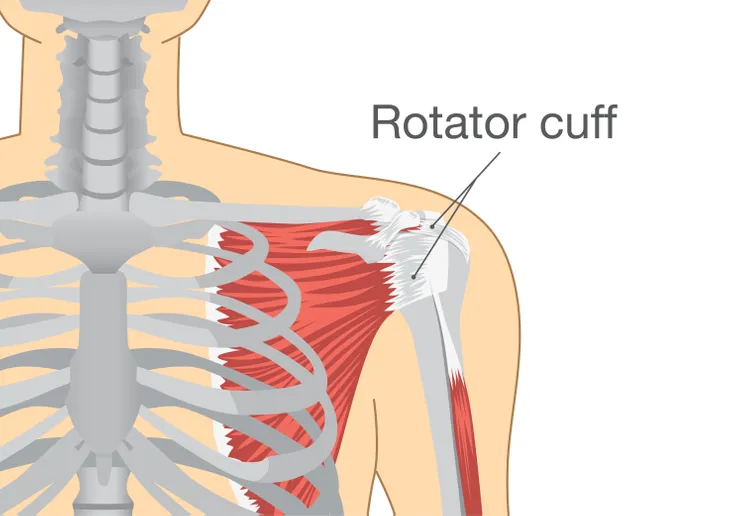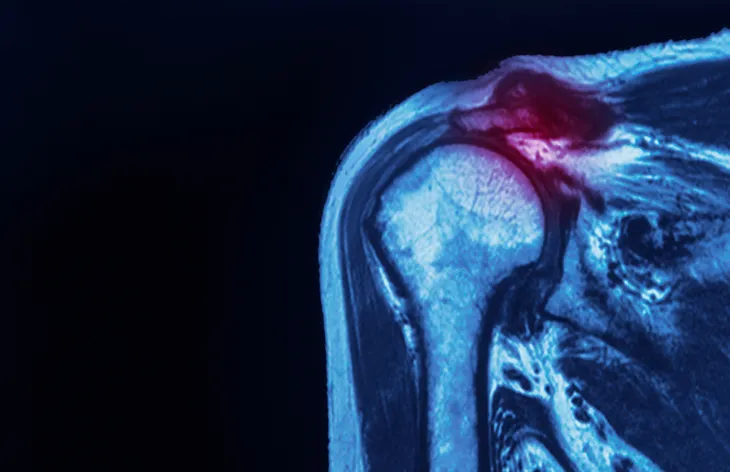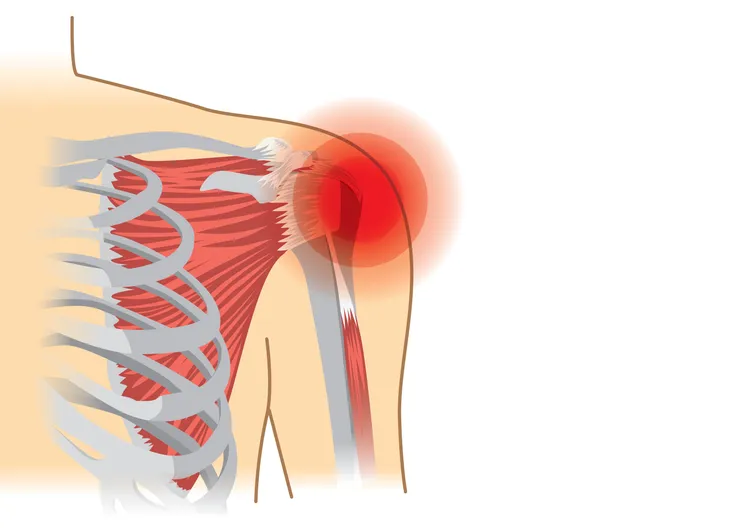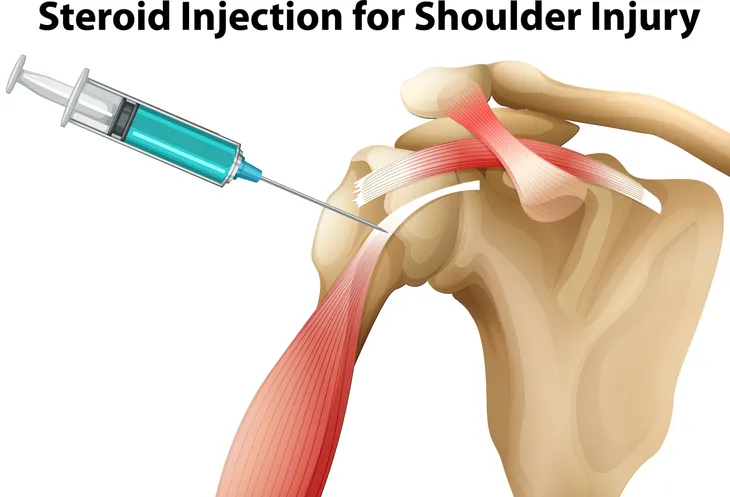We enjoy all the perks our joints give us, but we don’t often stop to think about how they operate and what happens when they become damaged. The rotator cuff is one of these joints that is prone to injury, so we need to take care of it and be mindful of any potential damage. It’s important because it provides us many luxuries we use in our everyday activities, from being able to twist our arm and even raise it.
Rotator cuff disease isn’t exactly a condition we hear about every day, so unless you’ve suffered damage to your shoulder in the past, you’ve likely never heard of your rotator cuff, let alone a rotator cuff disorder. To help get a better understanding of what this entails, here’s an indepth look at everything from the signs and symptoms to the many different treatment options…
What is a Rotator Cuff Disorder?
According to MyHealth.Alberta.ca, the rotator cuff is located in the shoulder and made up of tough, yet flexible fibres (also known as tendons), as well as muscle. A rotator cuff disorder occurs when the tissues in the shoulder become irritated or damage. This can happen from everyday wear and tear or injury.
There are four main disorders that can occur to the rotator cuff. The first is inflammation of the tendons. This condition is known as tendinitis. You can also experience inflammation of a bursa (bursitis). A bursa is located in the shoulder. It’s a small, fluid-filled sac that acts as a cushion between the tendons and the bones.
Another disorder that can occur is impingement which occurs when a tendon is squeezed and rubs against the bone. You could also have calcium buildup in the tendons, resulting in the painful condition called calcific tendinitis. And lastly, you could have a partial or complete tear of the rotator cuff tendons, explains the source.
What Does the Rotator Cuff Do?
The rotator cuff is located in the shoulder which is made up of three main bones. These bones are the upper arm bone (humerus), the collarbone (clavicle), and the shoulder blade (scapula), says MyHealth.Alberta.ca. Each of these bones are held together by muscle, tendons, and ligaments. The rotator cuff is what keeps the upper arm bone in the shoulder socket, says the source. It’s also what allows us to make movements with our arm like raising and twisting.
The shoulder operates like a ball in socket joint. “The ball at the top of the upper arm bone fits into the socket of the shoulder blade. This socket is shallow, which lets you move your arm in a wide range of motion,” writes the source. In addition to giving us movement in our arm, the rotator cuff has to work hard to hold all these bones in place, making it prone to injury and everyday wear and tear.
Symptoms
Pain
The most common symptom associated with rotator cuff disease is pain. It will likely start as a dull ache in the shoulder and become worse with use of the arm. This pain then leads to a number of other symptoms, including weakness and difficulty sleeping. You may suffer from pain that is so uncomfortable it interferes with your ability to sleep at night.
This pain is often located on the side and front of the upper arm and shoulder, says MyHealth.Alberta.ca. In addition to difficulty sleeping, the pain may also make it hard to accomplish everyday activities, such as getting dressed in the morning.
Difficulty Lifting Arm
In addition to pain, rotator cuff disease will also make it difficult to lift your arm. “It may be impossible to do everyday things, such as comb your hair, tuck in your shirt, or reach for something,” writes MyHealth.Alberta.ca.
While the symptoms of rotator cuff disease are uncomfortable and painful, the Mayo Clinic says most people are able to return to their daily activities with the help of physical therapy exercises that work to improve flexibility and strength in the muscles around the shoulder joint.
Causes
Rotator cuff disease and injury is typically the result of either a substantial injury to the shoulder or progressive degeneration and wear and tear of the tendon tissue. “Using your shoulder for many years slowly damages the rotator cuff,” writes MyHealth.Alberta.ca. “As you age, everyday activities can lead to changes in the rotator cuff, such as thinning and fraying of the tendons and reduced blood supply.”
Progressive degeneration can occur in people who are often using their arms to lift objects or by lifting heavy objects overhead for a prolonged period of time, says the Mayo Clinic. Any of these types of activities can cause irritation or damage to the tendon. MyHealth.Alberta.ca notes that even any kind of normal motion made repeatedly over a prolonged period of time can stress or injury the rotator cuff.
Another cause could be injury, such as a tear in the rotator cuff tendon. MyHealth.Alberta.ca says this kind of damage can occur during sports, a car crash, or a severe fall. However, if you’re an elderly person, it doesn’t take much. Even just lifting a heavy suitcase overhead could cause a rotator cuff tear, particularly if there is already a shoulder injury.
Risk Factors
We’ve already touched on many of the common risk factors, but according to the Mayo Clinic the three biggest risk factors are age, construction jobs, and family history.
Rotator cuff injuries become more common with age. They’re also more likely to occur at an earlier age in people who “require repeatedly performing overhead motions.” An example of this would be a painter or carpenter. Lastly, some people have a genetic component that may put their rotator cuff at a greater risk for injury. Rotator cuff injuries occur more frequently in certain families, says the Mayo Clinic.
Complication
It is extremely important that anyone suffering from a rotator cuff injury or disease receive treatment because without it complications can arise. The condition will only get worse over time and may lead to permanent loss of motion or weakness, says the Mayo Clinic, and may even result in “progressive degeneration of the shoulder joint.”
While resting the shoulder is a necessary step in the recovery and treatment process, you’ll also need to maintain movement because “keeping your shoulder immobilized for a prolonged time can cause the connective tissue enclosing the joint to become thickened and tight (frozen shoulder),” writes the source.
Prevention
Anyone who is at an increased risk for a rotator cuff injury or rotator cuff disease should be proactive in trying to prevent this condition from happening. This includes anyone who has had a rotator cuff injury in the past. A great way to prevent further injury is to do daily shoulder strengthening exercises, says the Mayo Clinic.
While most people will start by building muscle in their chest, shoulder, and upper arm, you should also pay special attention to the back of the shoulder and around the shoulder blade. These are the muscles that will optimize shoulder balance, explains the source. Seek assistance from a doctor or physical therapist to develop a strategic exercise routine that works to prevent rotator cuff disease.
Diagnosis
In order to get a proper diagnosis for rotator cuff disease, you’ll have to go see a doctor where they will likely ask about any past shoulder injuries or pain. You’ll undergo a physical examination where they will assess how well your shoulder is currently working and locate any areas of pain, as well as activities that are difficult. “Moving your arm in certain ways can help a doctor learn about the condition of the rotator cuff,” says MyHealth.Alberta.ca.
You may also have an X-ray to check the bones in the shoulder and further confirm a diagnosis. If that X-ray comes back inconclusive, you can have an MRI or an ultrasound, writes the source.
Treatment Options
If a rotator cuff disease diagnosis is determined, you’ll need to seek treatment. Without treatment, the problem will not go away. In fact, the shoulder may become weaker over time and eventually get so bad you may not be able to lift your arm.
The most common treatments are rest, ice, and physical therapy. For some people, this is all they need to recover from a rotator cuff injury. However, for those who have rotator cuff disease, they may need a little more help, such as injections or even surgery.
Injections
If rest and physical therapy does not work to improve any damage to the rotator cuff, your doctor might recommend steroid injections into the shoulder joint. This type of treatment is particularly popular for people whose pain is so severe that it’s interfering with their daily life by making them unable to accomplish everyday activities, sleep, or even partake in physical therapy.
These types of injections aren’t really a long term solution. They offer temporary relief, and according to the Mayo Clinic, they should be used judiciously. This is because they can make the tendon even weaker. This could potentially decrease the success of any other treatments like surgery.
Therapy
Physical therapy is one of the most common and effective forms of treatment for rotator cuff disease and injury. This will likely be the first recommendation from your doctor. You’ll need to find a physical therapist who can provide exercises that target the exact location of your injury. These exercises will work to restore flexibility and strengthen the shoulder, says the Mayo Clinic. It’s an important part of the recovery process for everyone.
Surgery
As with many other health conditions, surgery is the last option. There are four different surgeries available for a rotator cuff injury or disorder, says the Mayo Clinic. The first is arthroscopic tendon repair. During this procedure, a small camera and tools are inserted into a tiny incision where they work to reattach the torn tendon to the bone. You might also have open tendon repair, which for most people is a better option. This surgery requires a larger incision to reattach the tendon to the bone.
You might also have tendon transfer. This surgery is for people who’s damage is so severe, their original tendon cannot be reattached to the bone. Surgeons will use a nearby tendon as a replacement, says the source. The last option is a shoulder replacement surgery which is a major surgery and only used in severe cases. “To improve the artificial joint stability, an innovative procedure (reverse shoulder arthroplasty) installs the ball part of the artificial joint onto the shoulder blade and the socket part onto the arm bone,” writes the Mayo Clinic.

